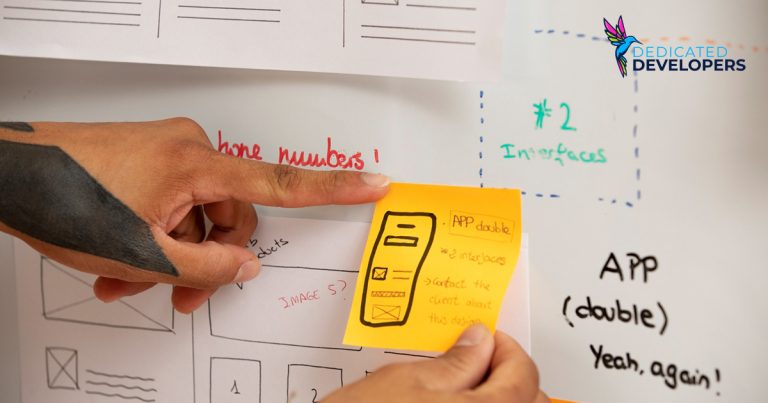React Native App Development Saves a Lot
Tired of using limiting platforms for mobile application development? Are you looking for more customizable and liberal options? With existing JavaScript knowledge, web developers can now create wholesome mobile applications using a new interface called React Native.
Originally created by Jordan Walke, React Native is a product of Facebook’s Internal Hackathon Project from the summer of 2013 and was first previewed in January 2015. React Native also became open-source to the public in 2015. September 2016 saw the projected trend enough to surpass that of iOS and Android trends in mobile development.
In a little over a year, React Native grew large very quickly. With impressive statistics on GitHub where it was first launched and is periodically updated, its adoption rate has risen exceptionally. We find tech giants like Samsung and Microsoft committedly supporting the project.
React Native is a JavaScript structure targeted at building mobile platforms by writing and rendering by native methods, mobile applications for iOS, Android and Windows. Custom Web Development Company use the React Native interface to build and develop mobile applications similar to the web versions with the aid of a JavaScript library. Sharing of codes across web and mobile platforms is permitted. It can also simultaneously render and develop applications on Android, Apple and Windows operating systems.
The React Native Development Company and its team of dedicated developers programmed the React Native framework to render mobile applications without using web views, but rather, employing the use of real mobile UI components to give a realistic and natural tone similar to any other mobile application. It does not rely on HTML but trans-piles JavaScript to native code with the use of native SDKs.
WHO USES REACT NATIVE?
A number of your desired mobile applications are rendered using the React Native interface. From established organizations to fresh startups, companies like Facebook, Pinterest, Walmart, Bloomberg, Instagram, SoundCloud, Skype, Uber, Adidas, among others, have developed their mobile applications on iOS, Android and Windows platforms using the React Native framework.
WHY SHOULD I USE REACT NATIVE?
Apart from the easy-to-use interface, React Native offers a whole lot of advantages. Recent statistics from users and mobile app developers tell about the positive results after utilizing the interface to render mobile app versions of their web designs. Here are some great motives why every productively dedicated mobile app developer is looking into React Native these days:
1. Cost
What greater way to start this list? React Native is moving the appearance of mobile app development and with the recent increase in the engagement of the framework, more developers are laying their hands on app development again. There is now an influx of mobile application development, with high global competition causing new apps to pop up on application stores. For this reason, the price of rendering mobile apps for your web design projects has dropped drastically in recent months. Hence, using React Native saves the developer and the client a lot. This leads us to our second advantage.
2. Time
This might come off as physics but it made the list! React Native is definitely not your typical mobile app development structure. It combines your favorite cross-platforms and hybrid frameworks into one amazing interface that takes half the time normally used on those other platforms for rendering and developing mobile applications. Never again will you have to spend days writing codes and synchronizing them across the hybrid platforms. It reiterates UI modules really fast. Also, you get into your flow states pretty quickly with shorter build times.
3. Morale Booster
A platform that saves you money, time and energy automatically motivates you to try it out. This gets you up on your feet again, back to mobile app developing. As you’re guaranteed to get hooked, you work smart and stress less. Using React Native makes mobile application development fun again.
4. Customer Customization
React Native makes it so easy to add your own native features which can be linked to your React Native codebase. It also permits custom styling. React Native provides a set of base level components to be used to build mobile apps. It takes some getting used to, as you cannot use HTML tags because it’s a phone code, but it’s a simpler feel.
5. Ease of Use
We’re passing this out again because of how amazing it is. You no longer need to path your builds yourself with React Native. It sources your JavaScript library and bridges it with your native library. Without modification, internal web elements can also be reused. The interface is confirmed to be developer-friendly.
6. Versatility
Apart from iOS, Android and Windows devices, React Native supports a couple of other platforms like MacOS, Universal Windows Platform (UWP), Ubuntu, Apple TV and in recent times, Android TV.
7. Manpower
Unlike other mobile app development approaches that require a large team, React Native is different. With as little as two experienced engineers, you can build your mobile application hassle-free without forgoing the user experience.
8. Updates and Upgrades
React Native and its team of dedicated developers is working around the clock to eliminate errors and glitches in using the framework. Updates are provided periodically for users and developers. Also, the use of React Native in mobile app design allows the designer to fix bugs as soon as they are found and to push app updates in no time. Amazing, right?
We’ve laid out some really convincing options to discard your old frameworks and plug into React Native for good. From all this it’s obvious that React Native has made so much progress in such a short time, driving the cumulative user adoption of mobile applications from zero to billions without forgoing overall yield. Developers now work at incomparable speeds. React Native is not perfect but is actively striving towards perfection by constantly finding solutions to new-end challenges, and we can say that it’s here to stay.







